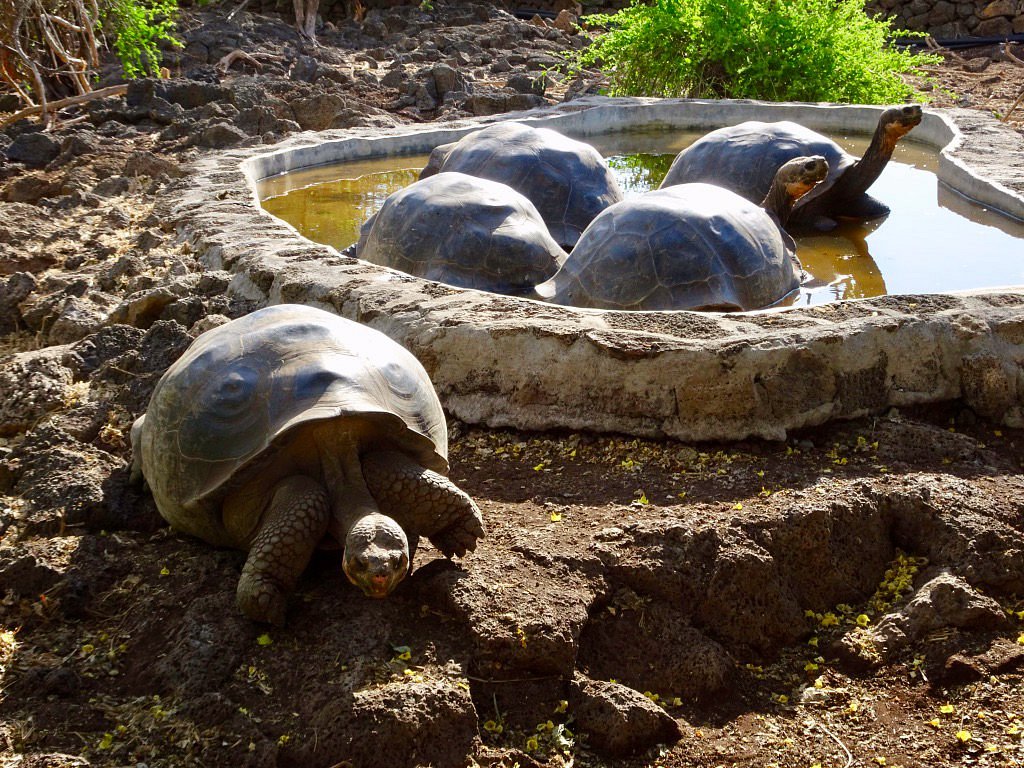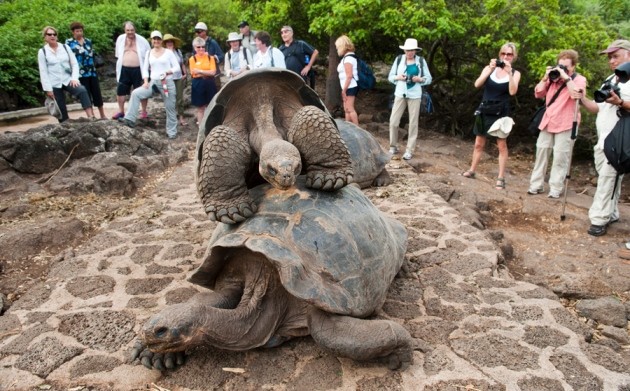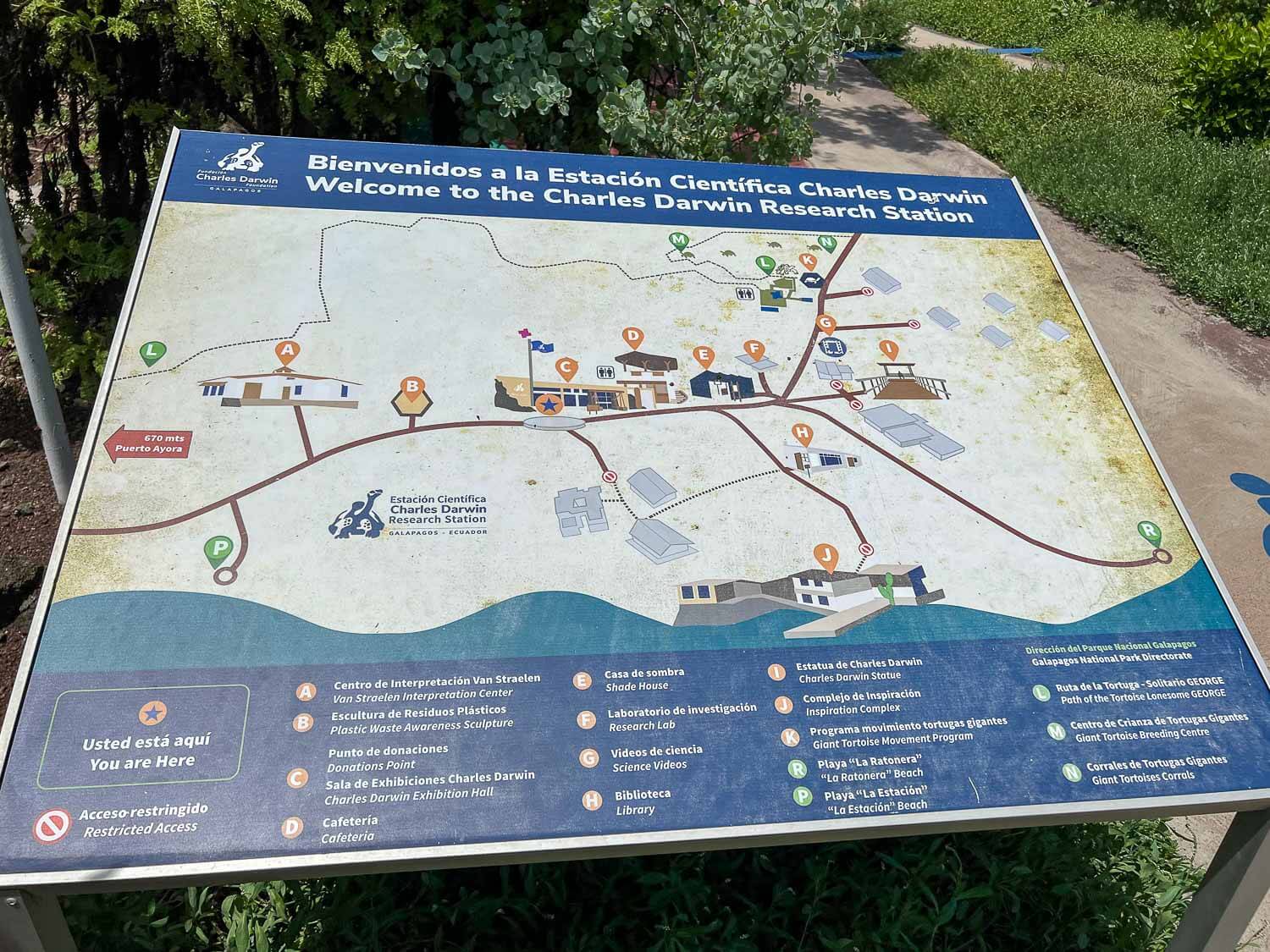Dive into Discoveries: The Charles Darwin Research Station in the Galapagos Islands

Introduction to the Charles Darwin Research Station
The Charles Darwin Research Station (CDRS) stands as a testament to the enduring legacy of scientific inquiry and conservation on the Galapagos Islands. Its scope extends beyond mere research; it plays a pivotal role in preserving the unique biodiversity of these stunning islands, which captivated Charles Darwin himself during his historic voyage aboard the HMS Beagle.
History of the Research Station
Established in 1964 by the Charles Darwin Foundation, the CDRS emerged from a growing recognition of the fragile ecosystems of the Galapagos. As the islands faced increasing threats from invasive species, human activity, and climate change, the need for dedicated scientific research and conservation efforts became indisputable. Here’s an interesting fact: when the station first opened its doors, it worked primarily on local species studies and quickly gained recognition as a hub for biodiversity research.
Over the decades, the CDRS has expanded its efforts to include various projects and partnerships with national and international organisations. The combination of scientific research, public education, and community engagement has transformed the station into a beacon of hope for conservationists and nature enthusiasts alike. Key milestones in the history of the CDRS include:
- 1964: Founding year, focusing on native species and invasive species management.
- 1970s: The introduction of various conservation programs, boosting efforts in habitat restoration and species protection.
- 1990s: Expansion into marine research, exploring the intricate ecosystems surrounding the islands.
- Present day: Continuous collaboration with local communities and global partners in conservation efforts.
Mission and Goals of the Research Station
The mission of the Charles Darwin Research Station is simple yet profound: to promote the conservation of the Galapagos Islands and their unique ecosystems through scientific research, education, and community involvement. The goals of the research station can be broken down into a few key areas:
- Biodiversity Preservation: Conducting research on endemic species and their habitats, ensuring that evolutionary wonders remain protected for future generations.
- Environmental Education: Spreading awareness about the importance of conservation among locals and visitors, fostering a collective sense of responsibility towards nature.
- Research Collaboration: Working with scientists and institutions worldwide to share knowledge, develop techniques, and innovate new conservation methods.
- Community Engagement: Involving local communities in conservation projects, promoting sustainable practices, and demonstrating the value of protecting natural resources.
Through these missions and goals, the Charles Darwin Research Station not only contributes crucially to scientific understanding but also serves as an inspiring model for how dedicated efforts can lead to effective conservation in one of the most biologically diverse areas on the planet. As you explore the station, you will surely sense the commitment and passion driving its initiatives, making it a must-visit for anyone invested in the future of our planet's ecosystems.

Importance of the Galapagos Islands
The Galapagos Islands, often referred to as nature's laboratory, hold immense significance for biodiversity and conservation efforts around the globe. As we delve into their unique ecosystems, you’ll discover why these islands captured the interest of scholars like Charles Darwin and continue to inspire conservationists today.
Biodiversity of the Galapagos
The islands are famed for their extraordinary levels of biodiversity, hosting species that exist nowhere else on Earth. Imagine a place where giant tortoises, marine iguanas, and blue-footed boobies coexist harmoniously. This blend of wildlife provides a live canvas illustrating the principles of evolution. Some remarkable facts include:
- Endemism: Approximately 80% of the flora and fauna in the Galapagos are endemic, meaning they cannot be found in any other part of the world. For example, the Galapagos finches are a primary example of adaptive radiation, showcasing how species evolve to fill distinct ecological niches.
- Unique Ecosystems: Ranging from lush humid highlands to arid lowlands and bustling marine environments, the Galapagos offers diverse habitats for various species, supporting everything from vibrant marine life to rare terrestrial plants.
- Fragile Balance: The remote nature of the islands has allowed unique species to thrive, yet this balance is precarious. Human intervention has presented challenges, highlighting the importance of ongoing conservation efforts.
Conservation Efforts in the Galapagos
Recognising the islands' ecological significance, various local and international organisations have rallied together to implement conservation measures. The Galapagos National Park, established in 1959, plays a central role in safeguarding the ecosystems and species native to the islands. Key initiatives include:
- Invasive Species Control: Programs aimed at managing and eradicating invasive species that threaten native populations. For instance, efforts to control rats and goats, which disrupt local wildlife, are crucial to reclaiming habitats.
- Restoration Projects: Reforestation and restoration of habitats for endangered species such as the Galapagos tortoise. The success of breeding and releasing these iconic creatures back into the wild is a highlight of the conservation efforts.
- Community Involvement: Engaging local communities in conservation activities fosters a long-term commitment to preserving their natural heritage. Community-led eco-tourism initiatives have also blossomed, providing sustainable economic opportunities while protecting the environment.
The synergy between biodiversity and conservation makes the Galapagos Islands a vital area for global ecology. As you wander through this stunning archipelago, you’ll undoubtedly appreciate the delicate balance that conservationists strive to maintain, along with the incredible creatures that call these islands home. The more we embrace and support these initiatives, the brighter the future for the unique ecosystems of the Galapagos becomes.

Charles Darwin's Legacy
The significance of Charles Darwin in the realm of science cannot be overstated. His journeys to the Galapagos Islands not only reshaped our understanding of evolution but also left an indelible mark on the scientific community and society at large. As we explore Darwin's evolutionary discoveries, you'll see how they continue to influence contemporary thought.
Evolutionary Discoveries
When Charles Darwin set sail on the HMS Beagle in 1831, he could hardly have anticipated the revolutionary ideas that would stem from his observations in the Galapagos Islands. The rich array of species he encountered set the stage for his ground-breaking theory of natural selection. Some of the most significant discoveries include:
- Adaptive Radiation: Darwin noted that different islands hosted distinct variations of the same finch species. Each finch had evolved unique beak shapes suited to their specific feeding habits, illustrating how species adapt to their environments.
- Giant Tortoises: The giant tortoises of the Galapagos are not only iconic but are also a striking example of evolutionary adaptation. Different islands showcased variations adapted to their unique habitats—some tortoises had dome-shaped shells for lush vegetation, while others had saddle-backed shells for reaching higher foliage.
- Marine Iguanas: The only lizard capable of foraging in the ocean, marine iguanas capture the essence of adaptation. Observing these fascinating reptiles led Darwin to ponder how species could diverge to thrive in different environments.
These discoveries weren’t just scientific curiosities; they laid the groundwork for his seminal work, "On the Origin of Species." This revolutionary book introduced the concept of natural selection, fundamentally altering humanity's understanding of our place in the biological world.
Impact of Darwin's Work on Science
Darwin's influence extends far beyond the immediate implications of his findings. The ripple effects of his ideas can be felt across various fields of science and beyond.
- Biology and Genetics: Darwin's theories paved the way for later advancements in genetics and evolutionary biology. His work sparked interest in how traits are inherited and the mechanics of evolution, leading to a deeper understanding of heredity and variation.
- Sociology and Psychology: Darwin's theories have even impacted social sciences, encouraging new ways of thinking about human behaviour. Concepts such as survival of the fittest have been applied to understand societal dynamics and human interactions.
- Environmental Awareness: In today's climate crisis, Darwin's work reminds us of the delicate interdependence of life on Earth. It galvanises calls for conservation and stewardship of our planet’s precious biodiversity.
As you reflect on Darwin’s immense legacy, consider not only how his discoveries reshaped scientific paradigms but also how they continue to drive inquiry and innovation today. His journey from the Galapagos Islands echoes still, reminding us of the importance of understanding evolution—not just in terms of species, but in how we relate to the world around us. In an age of rapid change, the essence of Darwin's work encourages a relationship of respect and curiosity towards nature that is crucial now more than ever.
Research and Conservation Projects
The work at the Charles Darwin Research Station is not just about understanding the Galapagos Islands; it’s about active engagement in conservation that safeguards its unique biodiversity. Among the essential projects are the Giant Tortoise Breeding Program and various marine and terrestrial research initiatives, which truly exemplify the commitment to preserving these remarkable ecosystems.
Giant Tortoise Breeding Program
One of the flagship initiatives at the research station is the Giant Tortoise Breeding Program, aimed at combating the declining populations of these iconic reptiles. Once a staple of the Galapagos landscape, giant tortoises faced dire threats from habitat loss, hunting, and invasive species. Thanks to dedicated conservation efforts, these gentle giants are making a comeback. Here’s how the program works:
- Captive Breeding: The program begins with the eggs laid by tortoises collected from various islands. Eggs are incubated in controlled environments to improve hatchling survival rates, providing a safe haven from predators.
- Rearing Hatchlings: Once hatched, the young tortoises are cared for in nurseries until they are large enough to withstand threats in the wild—this stage lasts about three to five years.
- Reintroduction: After reaching a sustainable size, these young tortoises are reintroduced to their native habitats, where they can contribute to the ecological balance.
A particularly touching moment was when the first batch of tortoises was released back into their natural environment after years of meticulous care. The collective sigh of relief and joy from conservationists and local communities highlighted the importance of these efforts. Today, thanks to the program, several tortoise populations are showing promising signs of recovery.
Marine and Terrestrial Research Initiatives
In addition to the tortoise program, the research station engages in a plethora of marine and terrestrial research initiatives aimed at understanding and protecting the diverse ecosystems of the islands. Some noteworthy efforts include:
- Marine Research: Scientists study the delicate marine ecosystem surrounding the Galapagos. This includes monitoring fish populations, assessing coral health, and understanding the implications of climate change. For example, recent studies have tracked the migration patterns of sea turtles and their feeding habits in relation to shifts in ocean temperatures.
- Terrestrial Surveys: Initiatives to monitor terrestrial species, particularly endemic flora and fauna, provide insights into their health and the impact of human activities. Regular surveys help track changes over time and inform conservation strategies. Key projects focus on the control of invasive species like goats and rats, helping to restore the native flora.
- Community Engagement: Collaborative efforts with local communities ensure that conservation is not just top-down. Involving island residents in research and education programs fosters a sense of ownership over their natural heritage, encouraging sustainable practices that benefit both the environment and local livelihoods.
Together, these projects embody a holistic approach to conservation and research, combining rigorous scientific inquiry with practical measures that protect the delicate balance of life in the Galapagos. As you think about your journey through this extraordinary archipelago, consider the ongoing efforts of passionate individuals and organisations working tirelessly to safeguard its legacy for future generations. The stories of resilience and triumph in conservation offer hope, reminding us all of our role in protecting the planet's precious biodiversity.

Visitor Experience at the Research Station
Visiting the Charles Darwin Research Station is more than just a trip; it's an opportunity to engage with conservation in a hands-on way. The station has designed its visitor experience to be educational, interactive, and deeply impactful, allowing guests to learn about the fascinating history of the Galapagos Islands while supporting vital ecological initiatives.
Exhibits and Displays
One of the most captivating aspects of the research station is its thoughtfully curated exhibits and displays. As soon as you enter, you are greeted with a wealth of information that invites you to delve into the islands' unique ecosystems. Highlights include:
- Live Displays: Observe giant tortoises within their enclosures and watch as conservationists maintain the breeding programs. Witnessing these creatures up close gives visitors a tangible sense of their size and importance.
- Interactive Exhibits: The displays provide opportunities to learn through multimedia presentations, models, and interactive screens. Topics range from the evolution of the islands to the challenges faced by native species.
- Educational Panels: Informative boards guide you through the history of Darwin's discoveries and the ongoing research efforts at the station. You’ll come to appreciate the interconnectedness of species and the critical need for conservation.
- Art Installations: Some exhibits feature local artists who capture the beauty of the Galapagos through their art. These pieces inspire reflection on the islands' vulnerability and the need to protect them.
Visiting these exhibits can be both awe-inspiring and sobering. One might feel a tangible connection to the rich biodiversity and come away with a renewed appreciation for conservation efforts.
Volunteer and Educational Programs
For those looking to deepen their connection to the Galapagos, the research station offers various volunteer and educational programs. These initiatives allow visitors to step beyond traditional tourism and actively participate in conservation efforts.
- Volunteer Opportunities: Hands-on volunteer programs attract passionate individuals who wish to contribute to the conservation cause. Volunteers can assist with habitat restoration, help with the Giant Tortoise Breeding Program, or participate in marine research projects. This immersive experience often proves life-changing as volunteers forge connections with the islands and learn about practical conservation methods.
- Educational Workshops: The station frequently hosts workshops covering various environmental topics. Visitors can attend talks given by leading researchers and conservationists, deepening their understanding of local ecosystems and global conservation strategies.
- Guided Tours: An engaging way to explore the station is through guided tours led by knowledgeable staff. These tours provide insight into the station’s work and the ongoing challenges facing the islands, making complex topics accessible and relatable.
The combination of exhibits, volunteering, and educational programs produces a well-rounded visitor experience that resonates with participants long after their trip. As you explore the Charles Darwin Research Station, you’ll find that every corner sparks curiosity, fosters awareness, and ignites a passion for conservation. More than just an educational visit, it’s a chance to be part of something greater—championing the need to protect and cherish one of the planet’s most extraordinary ecosystems.
